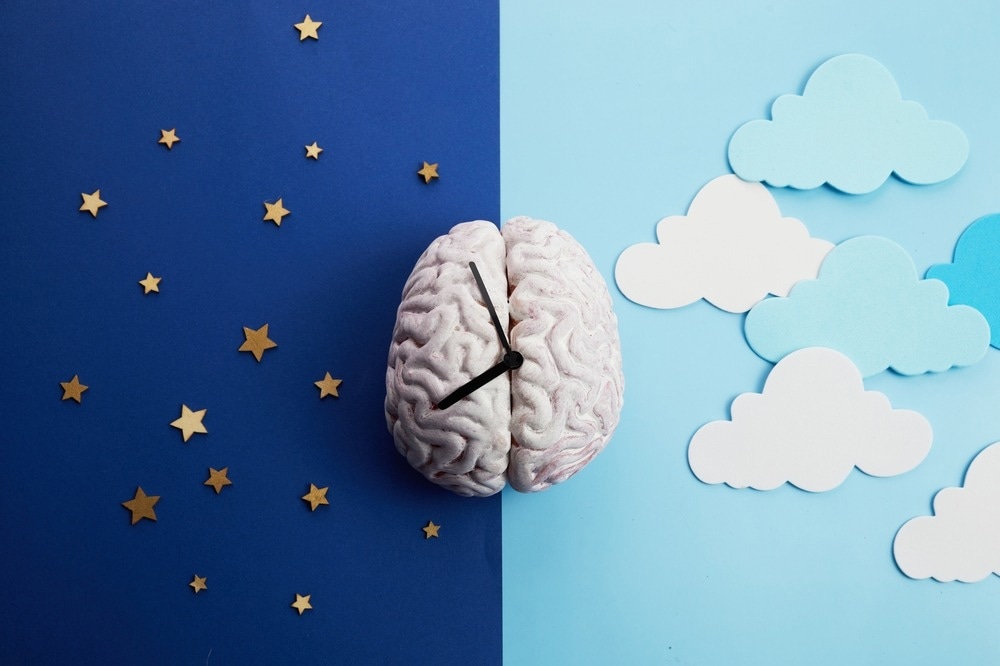Researchers from the National Institutes of Health and the Johns Hopkins University School of Medicine have discovered a protein in mice’s visual systems that seems essential for regulating the body’s circadian rhythms by reducing the brain’s sensitivity to light. The results, which were published on December 5th, 2023, in PLoS Biology, the study’s authors claim, boost attempts to treat jet lag and sleep problems more effectively.

Image Credit: vetre/Shutterstock.com
If circadian rhythms adjusted to every rapid change in illumination, say an eclipse or a very dark and rainy day, they would not be very effective in regulating such periodic behaviors as sleep and hunger. The protein we identified helps wire the brain during neural development to allow for stable responses to circadian rhythm challenges from day to day.”
Alex Kolodkin, Ph.D., Professor, Department of Neuroscience, Johns Hopkins University
Kolodkin and Samer Hattar, Ph.D., the head of the National Institute of Mental Health’s Section on Light and Circadian Rhythms, co-led the study.
For a considerable time, scientists have been aware that most living organisms possess a circadian “clock,” a collection of biological cycles that function on a roughly 24-hour cycle and impact many cyclic behaviors such as alertness, tiredness, hunger, and body temperature.
When this system is disrupted, as might happen when people work shifts or travel vast distances across different time zones, there can be dire repercussions. Previous research has connected long-term disruptions to circadian rhythm to a higher risk of depression, cancer, and a variety of other diseases.
Exposure to light effectively “trains” circadian systems. Over the last few decades, researchers have made great progress in defining the mechanics behind circadian rhythms, but they are still unsure of how the brain is programmed to produce them.
Kolodkin, Hattar, John Hunyara, Kat Daly, and his colleagues searched a database search for biological compounds that were present during development in the suprachiasmatic nucleus (SCN), the mouse brain’s circadian rhythm regulatory center.
The SCN is situated close to regions that regulate vision and connects to brain cells that go to the retina, the portion of the eye that detects light. It is located deep inside the hypothalamus of both the mouse and human brains.
The team of researchers rapidly focused on teneurin-3 (Tenm3), a cell surface protein that is a member of a wider family of proteins that are important for the building of the circuits in the visual system as well as other circuits in the central nervous system.
Compared to animals with intact Tenm3, the mice that the researchers genetically modified to stop Tenm3 synthesis had fewer connections between the retina and the SCN. Tenm3 is known to be located in the core and shell of the SCN; however, the mice lacking Tenm3 acquired considerably greater connections between cells in these regions.
The researchers created a series of tests to see how Tenm3 might maintain circadian rhythms or cause them to be disturbed by even minute amounts of light.
They taught mice deficient in Tenm3 to respond to a 12-hour light/dark cycle by moving the dark period forward by six hours. In mice with intact Tenm3, activity patterns indicative of regular sleep cycles showed that the mice need around four days to acclimate their circadian rhythms to the change. On the other hand, the animals without Tenm3 acclimated faster, in around half the time.
In a corresponding trial with twice as little light as in the previous trial, the mice with intact Tenm3 required around eight days to acclimate to their new circadian rhythms, but the mice lacking Tenm3 required just four days.
The Tenm3-lacking animals produced a brain chemical that acts as a stand-in for light exposure after just a 15-minute burst of low light, but not the mice with normal Tenm3 protein. This suggests that the Tenm3-lacking mice had a higher sensitivity to light signals that are essential for establishing or resetting the circadian clock.
The authors conclude from these data that Tenm3 contributes to the brain's wiring for consistent circadian rhythm maintenance even in the presence of varying light exposure. According to Hattar, additional knowledge about this system and Tenm3’s function may one day allow researchers to identify and address glitches that cause individuals to experience insomnia and other sleep problems, as well as potentially provide remedies for jet lag.
There are very clear implications for human health.”
Samer Hattar, Ph.D., Study Co-Lead, Head, Section on Light and Circadian Rhythms, National Institute of Mental Health
Source:
Journal reference:
Hunyara, J. L., et al. (2023). Teneurin-3 regulates the generation of non-image-forming visual circuitry and responsiveness to light in the suprachiasmatic nucleus. PLoS Biology. doi.org/10.1371/journal.pbio.3002412